What makes a place attractive for a traveller like me could be the history, the architecture, the natural beauty of the place or the culture.
Food reveals the soul and history of nation and Malaysia’s rich history leaves an indelible mark on Malaysian cuisine. It was the center of the spice trade and the amalgamation of the trader’s influence into local cuisine is felt up to today.
The myriad of different ethnic groups that make up the population of Malaysia and our colonial past make Malaysia’s cuisine unique, with a kaleidoscopic interpretation of common dishes in different geographical locales in the country.
Here, we list the 5 must-try Malaysian food from other communities available in Kuala Lumpur.
1. Mamak (Indian Muslim)
Mamak establishments can vary from air-conditioned restaurants to street-side stalls.
Fancy or simple, the “mamak” is THE place for the locals from all walks of life gather to eat, drink and socialize. It is usually open 24 hours, food is casual and affordable and some are equipped with a flat screen television or projector so that diners can watch the latest programs or live matches.The term mamak refers to Indian Muslims.
Hence the food is a fusion of Malay and Tamil influences. The staple food that the local like to eat at mamak included different varieties of roti canai, nasi lemak, mee goreng (fried noodles), sup kambing and tandoori chicken.
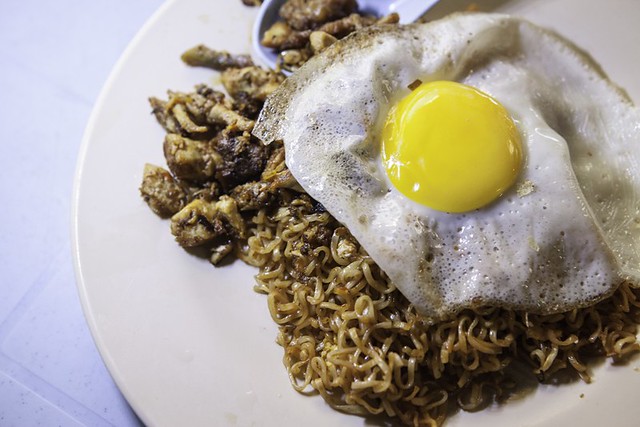
We recommend that you start with a roti canai and a teh tarik
Roti canai is made from a small ball of wheat dough which is kneaded, stretched and artistically tossed until it becomes stretchy and thin.
The dough is then spread on a hot pan and cooked flaky and crisp. Roti canai is served with a small bowl of lentil curry or dhall.
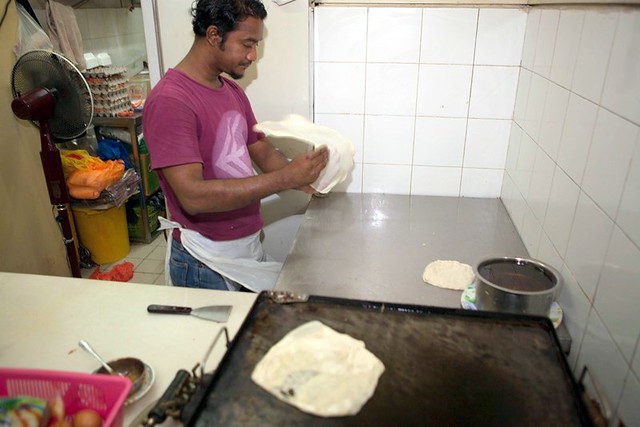

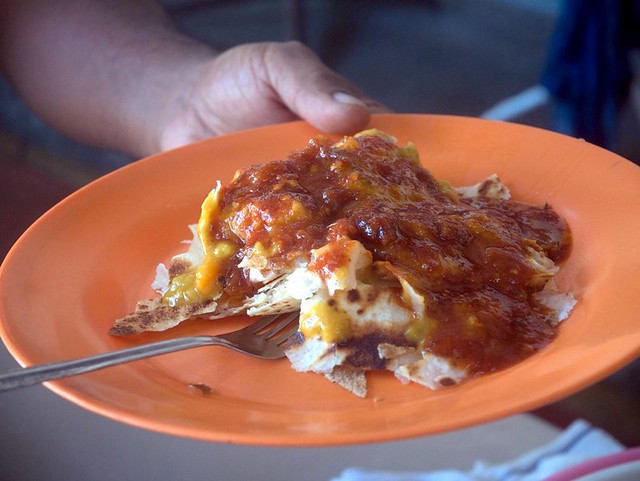
The most popular drink accompanying a mamak meal is a glass of hot Teh Tarik. Teh Tarik is rich black tea mixed with condensed milk.
The tea is poured ( or pulled as the locals call it and hence the word “tarik”) through the air between two containers in an artistic display that is a marvel to watch. Theatrics aside, the drink is a dreamy sweet concoction with a frothy top.
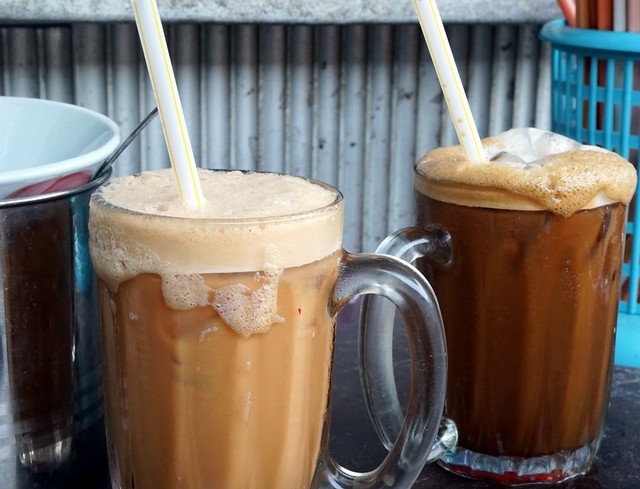
2. Pasembur/Indian Rojak
This is an Indian-Muslim dish where the main ingredients are shredded cucumber, sengkuang (Chinese turnip), blanched beansprouts, eggs, potatoes, fried beancurd and prawn fritters. Some add fried chicken and even noodles into the mix. All these ingredients are mixed with a thick, sweet but slightly spicy peanut sauce.
Different proprietors boast of their own special peanut sauce hence the taste would differ slightly at each venue. This is a local salad that that is popular among Malaysians as a tea-time treat.

3. Nyonya food
Peranakan or Nyonya cuisine combines Chinese, Malay and other influences into a unique blend. The early 15th century saw a rapid influx of Chinese traders and workers to the South East Asia region. Interracial marriages and an assimilation of cultures resulted in what we know as Peranakans or Babas and Nyonyas today.
One can easily spot Nyonya food in Malaysia by its cooking style and the word ‘Nyonya’, as a prefix, for example Nyonya Laksa, Nyonya Chicken Curry, Nyonya Prawn Sambal or Nyonya Kuih. There are many restaurants serving nyonya cuisine in KL city and we would recommend you to try some specialities like the Pongteh, a sweetish chicken (or pork) stew with potatoes, the cincalok omelette; salty and pungent, the creamy Nyonya Laksa and Pie Tee; dainty little pastry tart cups filled with cooked jicama and ‘otak-otak’; a popular blend of fish, coconut milk, chilli paste, galangal and herbs wrapped in a banana leaf.
Nyonya Laksa:

Otak – otak:
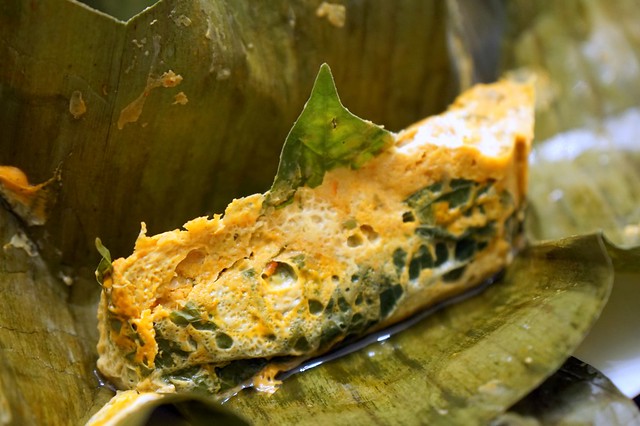
Pie Tee:
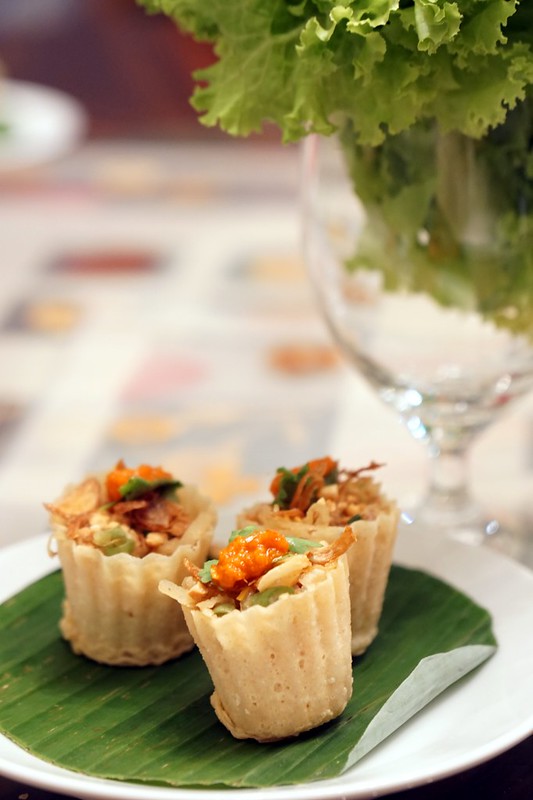
4. East Coast – Nasi Tumpang, Nasi Kerabu, Nasi Dagang
The East Coast states of Peninsular Malaysia (in particular Kelantan and Terengganu) offers some unique food preparations that are technically Malay cuisine yet different.
Nasi Dagang is a dish of fragrant, unpolished glutinous rice steamed with coconut milk, onions and fenugreek seeds.
This is served accompanied by tuna fish curry (local tuna, not the sashimi variety) called “Gulai Ikan Tongkol”. However current variants includes chicken curry too.
Another East Coast delicacy is Laksam; essentially rolls of rice noodles in a creamy fish curry made up of santan (coconut milk) and fish which are blended together. It’s topped with raw, crunchy bean sprouts, cucumber and a variety of fresh herbs plus a dollop of chilli paste for a fiery kick.

Nasi Kerabu is another rice-based dish native to Kelantan. This lovely meal of local herbs, traditional beef floss and fried ground coconut plus salted fish and fish crackers is easily identified by the ‘blue rice’ which is traditionally coloured with the blue pea flower (bunga telang).

The Nasi Tumpang is a multi-tiered meal of alternating rice, fish floss (serunding), fish curry and egg.
As history goes, Nasi Tumpang was meant to be a meal for the farmers who sets out very early to the fields daily. They do not come home till late so the wife (or family members) would pack rice together with leftovers & wrap it up in this shape.
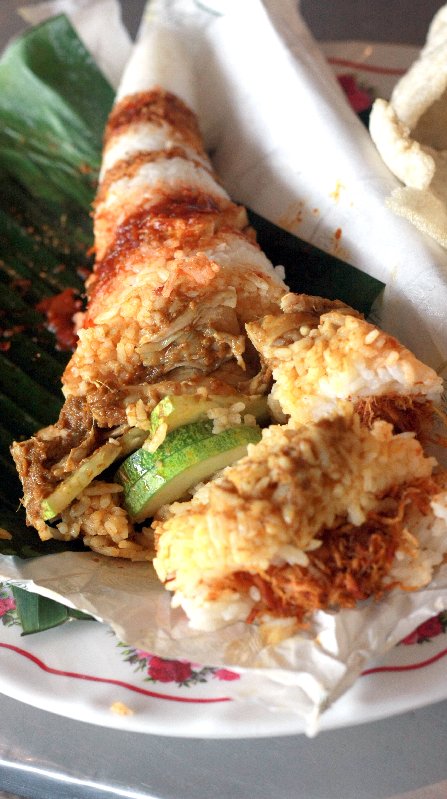
5. East Malaysia specialties – Kolo Mee, Sarawak Laksa
Our East Malaysia states of Sabah and Sarawak has some unique dishes on their own.
Here we list 2 that are synonymous with Sarawak; the largest state in Malaysia, also known as ‘The Land of the Hornbill’.
What is the Sarawakian Laksa? It is a bowl of spicy aromatic curry made of a myriad of spices which was cooked together in a prawn and chicken stock and thickened with coconut cream. The laksa broth is poured over oodles of rice vermicelli topped with garnishes of julienned omelette, chicken meat, boiled prawns, blanched bean sprouts plus herbs just prior to serving. It is served with a squeeze of lime and a generous dollop of fiery sambal belacan on the side.
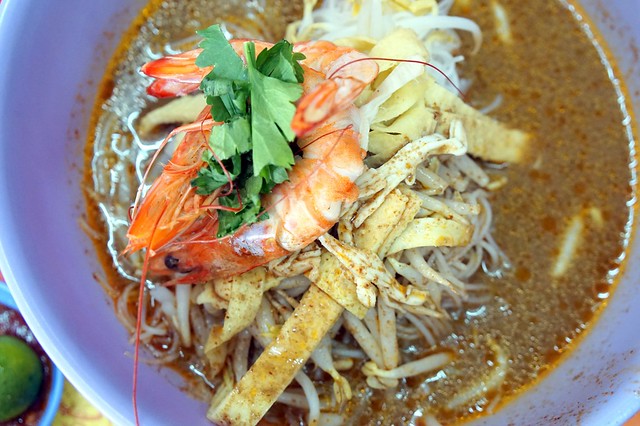
Sarawak Kolo Mee: The secret to an amazing kolo mee lies in the use of pork lard. It has to coat each and every strand of the egg noodles with its seriously delicious aromatic flavours.
The toppings are as basic as spring onions, minced pork and slices of char siew. Try the original version first for a better appreciation of the noodle’s flavor and move on to sample the red version, which is tossed in char siew sauce.
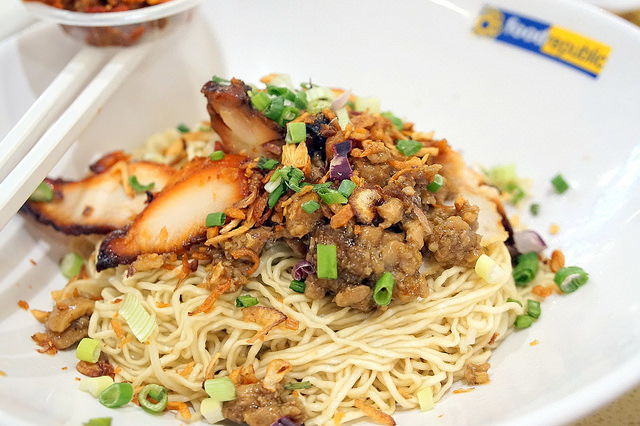
More Top Must-Try Food in Kuala Lumpur
Top Must-Try Food in Kuala Lumpur – Malay
Top Must-Try Food in Kuala Lumpur – Chinese
Top Must-Try Food in Kuala Lumpur – Indian & Pakistani
